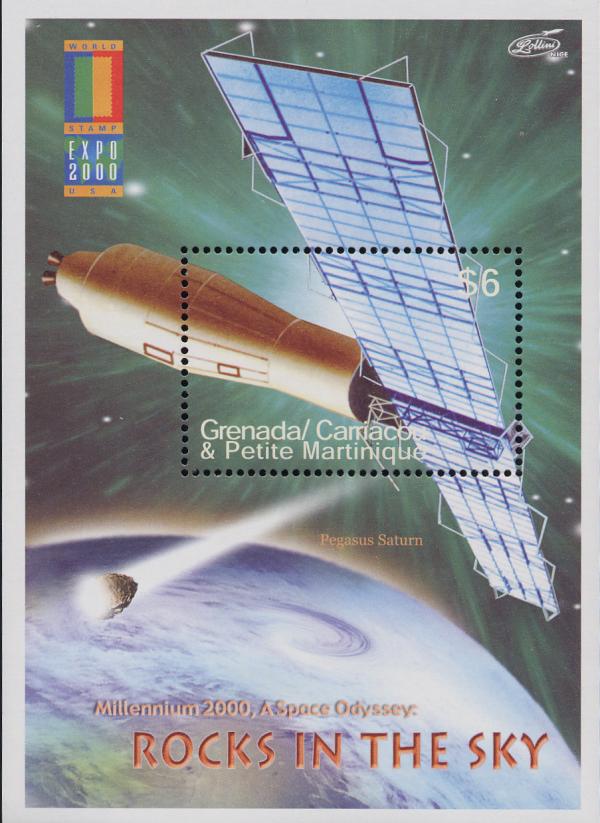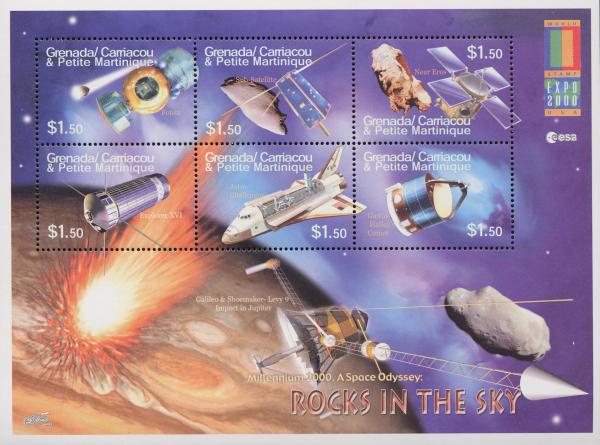
Grenada and the Grenadines

Denominazione ufficiale: Grenada e le Grenadine
Official name: Grenada and the Grenadines
Superficie: 344 km²
Popolazione: 102.000 ab. (2011)
Area: America centrale
Fuso orario: UTC -4
Prima emissione: 1973
Ultima emissione: Attuale
Per saperne di pił: http://it.wikipedia.org/wiki/Grenada

Soggetto: Rocks in Space Anno: 2000 Notizie: For the year 2000 World Stamp Expo the Grenada Grenadines issued two sheets of six stamps and two souvenir sheets in a series entitled "Rocks in Space." The Lollini family designed the stamps. They have designed many space-related stamp issues. All four sheets depict a variety of satellites and space vehicles which have aided our understanding of comets, meteoroids, and asteroids. Two of the sheets actually display rocks in space. One sheet (Scott #2208) depicts a meteoroid entering the Earth's atmosphere and beginning to burn up. The sheet also names the Pegasus Saturn satellite. I am not sure the illustrated satellite is actually a Pegasus. NASA launched three Pegasus satellites using Saturn boosters in preparation for the manned Apollo program. The Pegasus satellites assessed the potential hazard from collisions of micrometeoroids with manned Apollo spacecraft. The results suggested micrometeoroids posed little threat to either the Apollo service or command modules. |
|---|

Soggetto: the Shoemaker-Levy 9 comet Anno: 2000 Notizie: Another sheet (Scott #2206) contains six se-tenant stamps. Each nominally depicts a spacecraft important in the history of meteoritical research. However, another sheet in the series (Scott #2205) attaches the same six satellite names to completely different illustrations. Sheet #2206 also shows the impact of a fragment of Comet Shoemaker-Levy 9 with Jupiter in July 1994. The comet was discovered on March 24, 1993 by Eugene and Carolyn Shoemaker and their colleague David Levy during a photographic observation session using the 0.4 meter Schmidt telescope at Palomar Observatory in California. The comet had been disrupted by a close passage to Jupiter in 1992. Orbital calculations indicated the comet fragments would probably collide with Jupiter in July 1994. The whole world watched as twenty-one fragments struck Jupiter over a period of week beginning July 16, 1994. |
|---|